
Roots
There is a quiet wonder in observing the intricate relationship between self-expression and the adornments we choose, particularly those that grace our crowns. For centuries, across cultures, hair has held a profound place, a canvas for identity, status, and aspiration. When we turn our gaze to ancient Egypt, a civilization renowned for its meticulous artistry and enduring legacy, the story of hair takes a fascinating turn.
Here, the constructed coiffure, the wig, rose to prominence, becoming far more than a simple accessory. It was a deliberate act of creation, a sculpted statement, and its very construction profoundly shaped the ancient Egyptian understanding of beauty, health, and societal standing.
Consider the dry, arid climate of the Nile Valley, a land where cleanliness and protection from the sun were paramount. Natural hair, especially long, elaborate styles, presented practical challenges. Wigs offered a solution, a washable, re-stylable alternative that could be donned and doffed with ease. Yet, their purpose stretched beyond mere utility.
They became symbols, their very form and the materials used in their creation speaking volumes about the wearer and the prevailing aesthetic ideals. The perception of beauty in this ancient land was not static; it flowed and shifted, much like the Nile itself, and wig construction acted as a powerful current in this stream of evolving ideals.
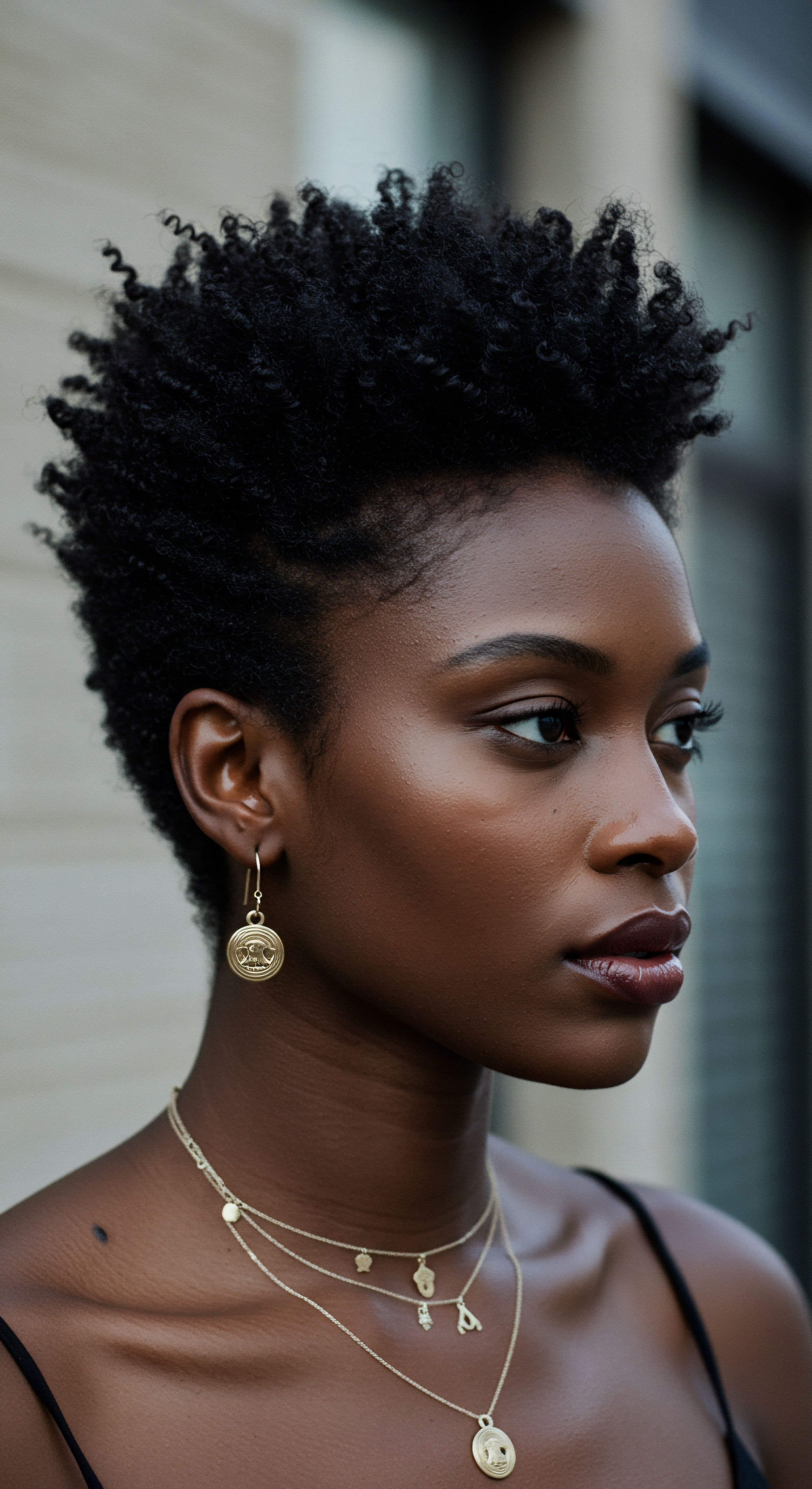
The Craft of Ancient Egyptian Wig Making
The creation of ancient Egyptian wigs was a sophisticated craft, demanding considerable skill and resources. Artisans, often specialized, transformed natural human hair, plant fibers, or even wool into elaborate headpieces. This was not a casual endeavor; it was an investment in appearance, a testament to the value placed on presentation.
The hair was meticulously prepared, cleaned, and often braided onto a mesh foundation made of plant material or animal fibers. Resins, beeswax, and even a type of vegetable gum were used as adhesives to hold the strands in place, giving the wigs their characteristic stiffness and sheen.
Ancient Egyptian wig construction was a sophisticated craft, transforming raw materials into sculpted symbols of beauty and status.
The tools employed by these wig makers were surprisingly advanced for their time, including fine combs, needles, and various molds to shape the finished product. The dedication to this craft underscores the central role wigs held in daily life and ceremonial contexts.
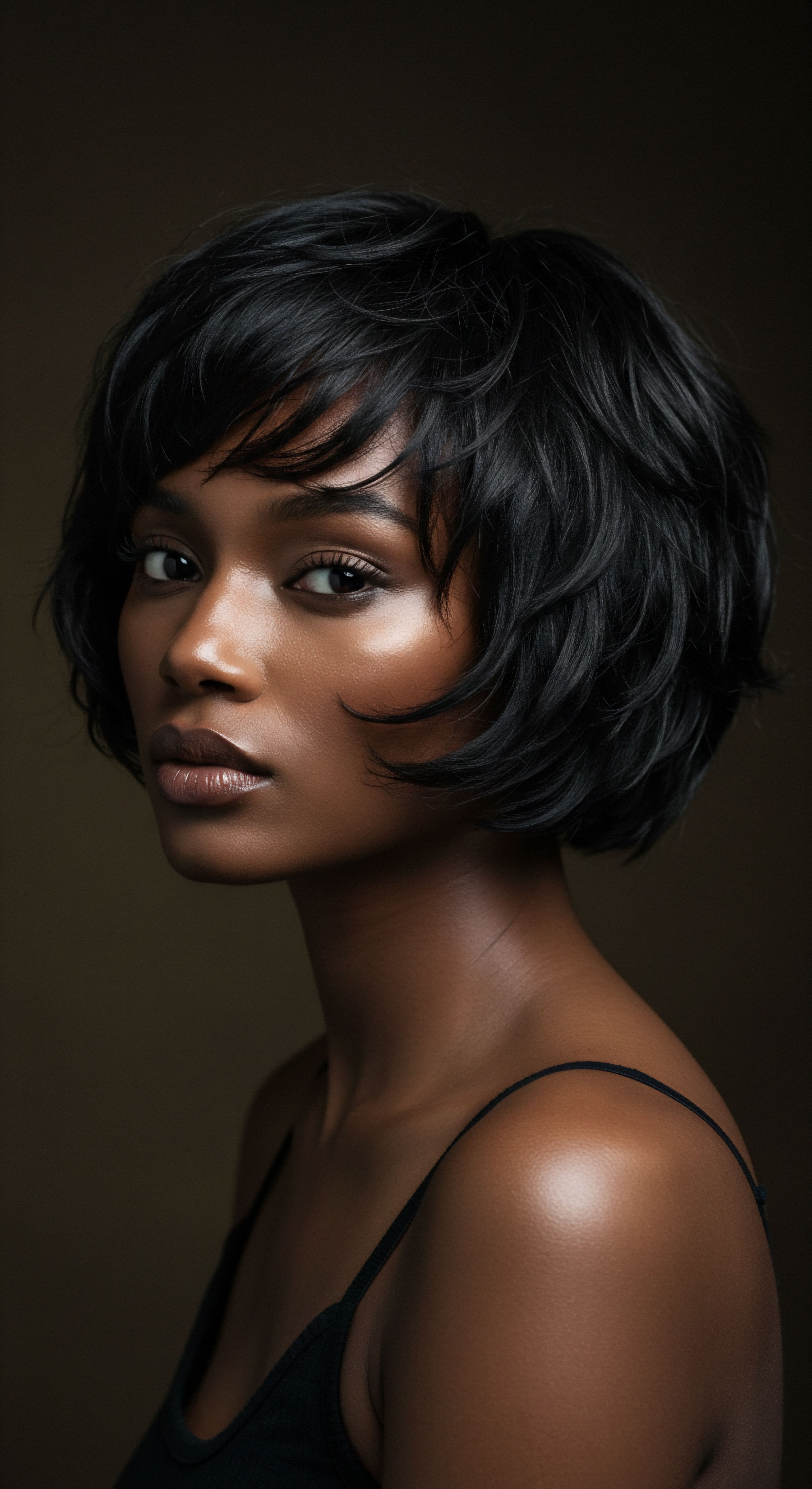
Materials and Their Symbolic Weight
The choice of materials in wig construction held distinct implications for beauty and social standing. While human hair was often preferred for its natural appearance and pliability, its scarcity meant that other materials found their place.
- Human Hair ❉ Prized for its softness and natural movement, human hair wigs were likely the most luxurious and costly, reserved for the elite. The acquisition of sufficient human hair for these elaborate constructions suggests a well-established trade or even a system of donation.
- Plant Fibers ❉ Less expensive and more readily available, plant fibers such as palm leaf or vegetable fibers were also employed. These wigs, while perhaps less fluid in their appearance, could still be styled impressively and offered a more accessible option for a wider segment of the population.
- Animal Hair/Wool ❉ Sometimes, animal hair, particularly from sheep (wool), was used, especially for more stylized or robust constructions. The sheen and texture of these materials could be manipulated to achieve desired effects.
The distinction in materials directly contributed to the perceived beauty of the wig, linking it to wealth and social class. A wig crafted from fine human hair, styled in a complex fashion, conveyed a different message than one made from simpler plant fibers, though both served the purpose of adornment and protection.

The Influence of Form and Function
The very construction of these wigs, dictating their shape, volume, and texture, undeniably influenced what was considered beautiful. Unlike natural hair, which has inherent limitations in length and density, wigs allowed for exaggerated forms and perfect symmetry. This control over form enabled the creation of idealized silhouettes that became synonymous with beauty.
The density of the strands, the precision of the braids, and the overall volume of the wig were all meticulously controlled during construction. This precision lent itself to a sense of order and perfection, qualities highly valued in ancient Egyptian aesthetics. A well-constructed wig presented a uniform, polished appearance, contrasting with the often less predictable nature of natural hair.
Furthermore, the ability to create consistent, standardized wig styles meant that certain looks could become widespread and aspirational. The iconic tripartite wig, for example, with its two long sections framing the face and a shorter section at the back, became a timeless representation of elegance. This style, made possible by the structured nature of wig construction, shaped the visual language of beauty for centuries.

The Aesthetic of Impeccability
Wigs, by their very nature, offered a level of pristine order that was difficult to maintain with natural hair in the Egyptian climate. The construction process allowed for the creation of perfectly symmetrical, uniformly dark, and highly polished surfaces. This aesthetic of impeccability, achieved through careful crafting and the application of scented unguents and oils, became a hallmark of beauty.
Consider the practical challenges of maintaining long, natural hair in a desert environment, prone to dust and insects. Wigs, being removable, could be cleaned and re-perfumed, presenting a consistently fresh and elegant appearance. This practical advantage elevated the wig to a symbol of hygiene and refinement, contributing to its perceived beauty.
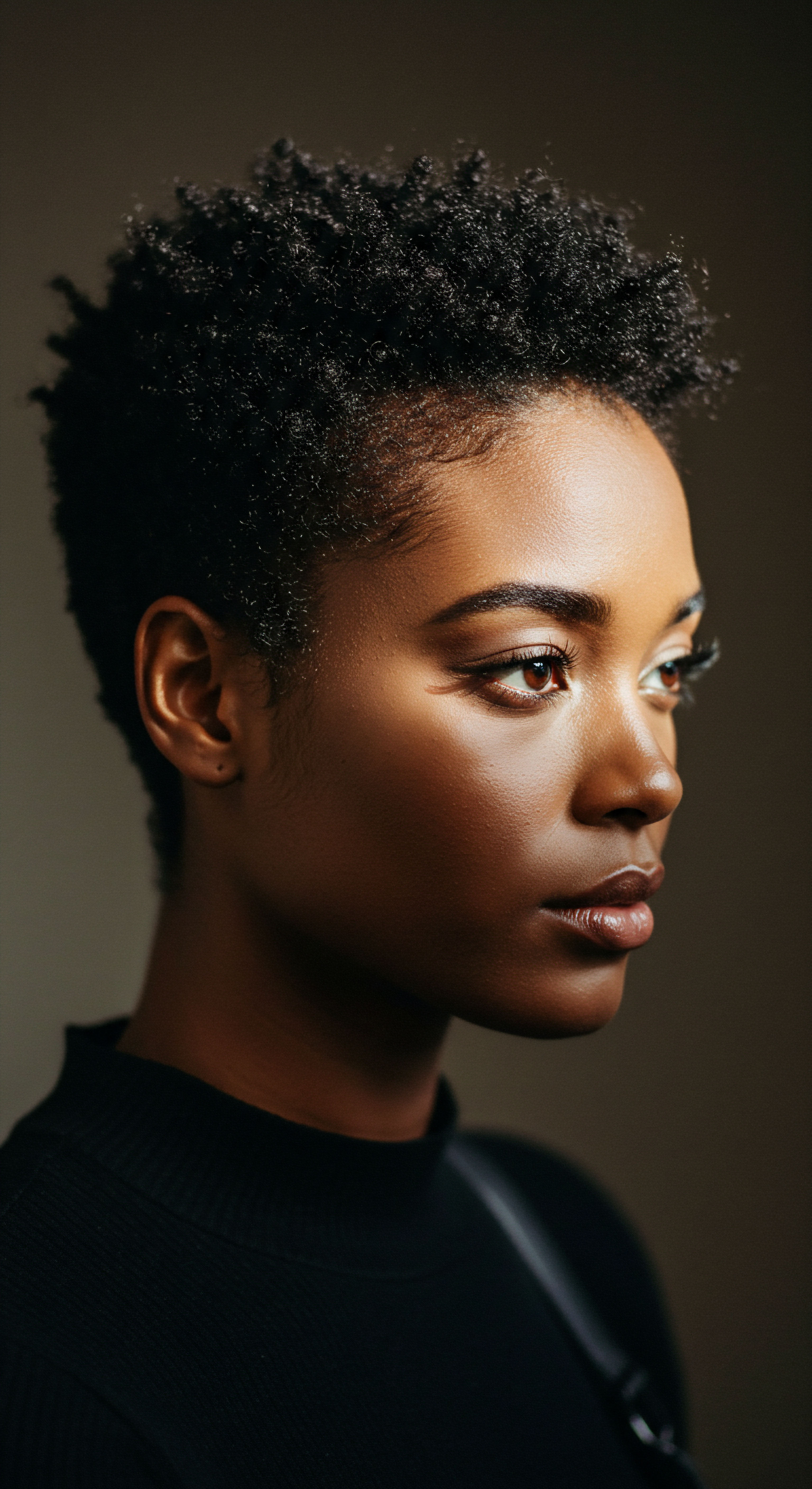
Ritual
When we consider the rhythms of daily life, the moments we dedicate to self-care, we recognize that these are often more than routine; they are rituals. In ancient Egypt, the donning of a wig, the application of scented oils, and the adornment of the body were not simply acts of vanity. They were deeply embedded rituals, expressions of social standing, religious piety, and a profound connection to the cosmic order.
The way wigs were constructed directly informed these rituals, shaping how individuals interacted with their own image and how society perceived them. This section delves into the practical and ceremonial aspects, exploring how wig construction influenced not only external appearance but also the very practices that defined beauty.
The structured nature of wigs, their ability to hold specific forms, allowed for standardized beauty ideals to propagate through society. These were not fleeting trends but enduring expressions of a cultural aesthetic. The process of preparing and wearing a wig became a significant part of one’s daily presentation, a ritual that affirmed one’s place within the social fabric.
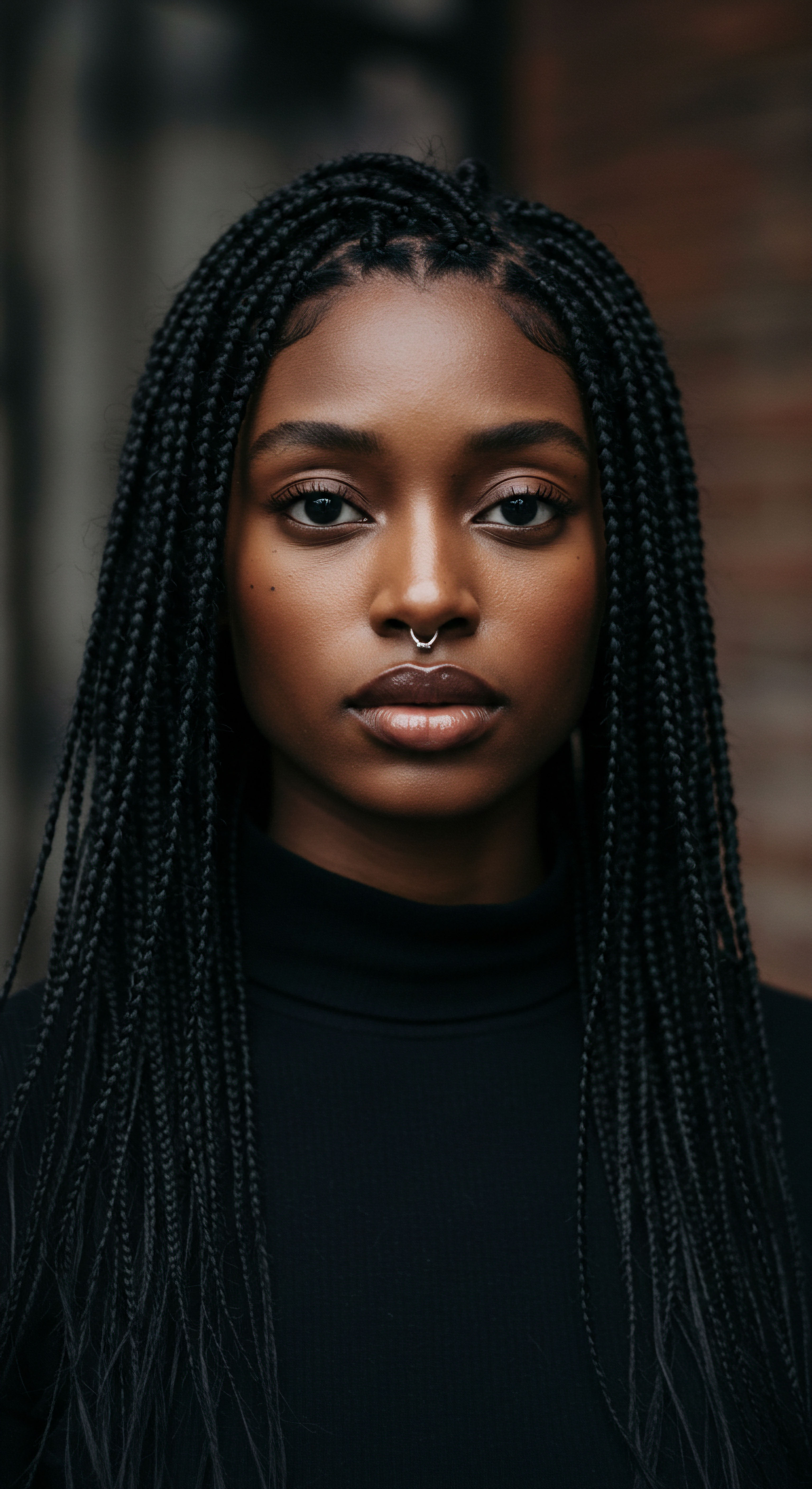
Wig Styles and Social Stratification
The construction of wigs directly dictated the range of styles available, and these styles were often meticulously regulated by social standing. The complexity, length, and materials of a wig communicated a clear message about the wearer’s wealth, profession, and position within the hierarchy. This visual language of hair, made possible by the diverse possibilities of wig construction, profoundly shaped perceptions of beauty.
For example, the most elaborate and voluminous wigs, often made of human hair, were reserved for royalty and high-ranking officials. These constructions required significant material and labor, signifying immense wealth and power. Their beauty was intrinsically linked to their cost and the status they conferred. Conversely, simpler, shorter wigs or those made from plant fibers were worn by commoners, still serving the purpose of adornment and protection, but signaling a different social tier.

Did Wig Volume Signal Status?
Indeed, the sheer volume and intricacy of a wig often served as a powerful visual cue for social standing. The ability to craft wigs with impressive density and complex arrangements of braids and curls was a testament to the artisan’s skill and the patron’s resources. These voluminous constructions created a larger-than-life silhouette, enhancing the wearer’s presence and authority.
A study published in the Journal of Egyptian Archaeology noted that tomb paintings and statuary consistently depict individuals of higher status with more elaborate and substantial wigs. This visual consistency suggests a widely understood code where wig construction directly correlated with perceived importance and, by extension, a particular form of beauty that was intertwined with societal achievement. The larger the wig, often, the higher the perceived station.

The Ritual of Adornment and Perfume
Wig construction also influenced the ritual of adornment through the integration of scented cones and unguents. These perfumed elements, often placed atop the wig, would slowly melt throughout the day, releasing fragrant oils that cascaded over the hair and body. This practice elevated the wig from a purely visual adornment to a multi-sensory experience, linking beauty with fragrance and cleanliness.
The structured nature of wigs, with their stable foundations, made them ideal platforms for these perfumed cones. Natural hair, with its movement and less rigid form, would have been less conducive to this practice. This aspect of wig construction thus fostered a specific beauty ritual that associated a pleasant aroma with the wearer’s appearance.
Wig construction facilitated the use of perfumed cones, linking visual beauty with a delightful aroma in ancient Egyptian adornment rituals.
The oils and resins used in wig construction themselves often contained aromatic properties, further contributing to this perfumed aura. The beauty perceived was therefore not only about the visual form but also about the subtle sensory experience created by the wig.

How Did Wig Maintenance Influence Perceptions of Hygiene?
The ease of maintenance offered by wigs significantly shaped perceptions of hygiene, which in turn contributed to their beauty. Unlike natural hair, which could become tangled, dusty, and harbor pests in the warm climate, wigs could be removed, cleaned, and stored. This practical advantage was a significant factor in their widespread adoption.
| Material Human Hair |
| Typical Wearer Royalty, High Elite |
| Associated Beauty Perception Luxury, Sophistication, Naturalism (idealized) |
| Material Plant Fibers |
| Typical Wearer Middle Class, Commoners |
| Associated Beauty Perception Practicality, Cleanliness, Modesty |
| Material Animal Hair (Wool) |
| Typical Wearer Specific Professions, Ritual Use |
| Associated Beauty Perception Durability, Stylized Form, Distinctive Presence |
| Material The materials chosen for wig construction reflected and reinforced social hierarchies and specific beauty ideals. |
The ability to maintain a consistently clean and well-groomed appearance through wigs was a powerful statement of refinement. A person wearing a pristine wig conveyed a sense of order and personal care, qualities that were deeply admired. This practical benefit seamlessly integrated into the broader aesthetic of ancient Egyptian beauty, where cleanliness was a virtue.
The meticulous attention to wig care, including washing, re-styling, and re-perfuming, was a ritual that upheld the ideal of an unblemished appearance. This systematic approach to hair care, enabled by wig construction, reinforced the idea that true beauty was inseparable from hygiene and order.

Relay
Stepping into the deeper currents of ancient Egyptian aesthetics, we discern that the influence of wig construction extends beyond mere appearance or ritual. It reaches into the very psychological and cultural frameworks that defined beauty, acting as a powerful relay of societal values, artistic expression, and even a unique form of self-presentation. The structured nature of these coiffures, their ability to be molded and adorned, allowed for a collective understanding of what was considered ideal, broadcasting these standards across the populace. This section seeks to unravel the complex interplay between the tangible craft of wig making and the intangible perceptions of allure it helped to solidify.
The fixed forms of wigs, often symmetrical and perfectly balanced, mirrored the ancient Egyptian worldview of cosmic order and balance, known as Ma’at. This philosophical underpinning subtly informed the aesthetic preferences for hair, making wig construction a silent, yet potent, communicator of cultural ideals. The consistent presentation of specific wig styles in art and daily life created a feedback loop, reinforcing what was deemed attractive and appropriate.

Idealized Forms and Artistic Representation
Wig construction provided ancient Egyptian artists with a powerful tool for representing idealized beauty. The structured, often rigid forms of wigs allowed for consistent depiction in reliefs, statues, and paintings. This artistic consistency, in turn, reinforced the prevailing beauty standards in the public consciousness.
Artists could sculpt and paint wigs with a precision that was difficult to achieve with natural hair, emphasizing symmetry, volume, and a flawless finish. These artistic representations then served as templates for what was considered beautiful in real life, creating a symbiotic relationship between the constructed object and its idealized portrayal. The visual language of ancient Egyptian art is replete with images of individuals adorned with impeccably styled wigs, solidifying these forms as the epitome of grace and distinction.

Did Wigs Standardize Beauty Ideals?
Yes, the construction of wigs undeniably played a significant role in standardizing beauty ideals across ancient Egyptian society. Unlike natural hair, which varies widely in texture, length, and growth patterns, wigs offered a uniform medium. This allowed for the widespread adoption and recognition of specific, idealized styles.
The ability to replicate identical wig styles meant that a consistent visual language of beauty could be disseminated. From the elaborate layered styles of the New Kingdom to the simpler, shorter forms of earlier periods, these constructed coiffures provided a clear, reproducible aesthetic. This standardization meant that beauty was often perceived through the lens of these perfect, sculpted forms.
- Consistency in Portrayal ❉ Wigs allowed for consistent representation in art, creating a visual lexicon of beauty that transcended individual variations in natural hair.
- Accessibility of Ideal ❉ While luxurious wigs were for the elite, the very concept of a standardized, perfected hair form became an ideal accessible to a wider populace through less costly wig alternatives.
- Societal Reinforcement ❉ The ubiquity of wigs, from daily wear to ceremonial occasions, reinforced these standardized ideals, making them deeply ingrained in the collective perception of beauty.
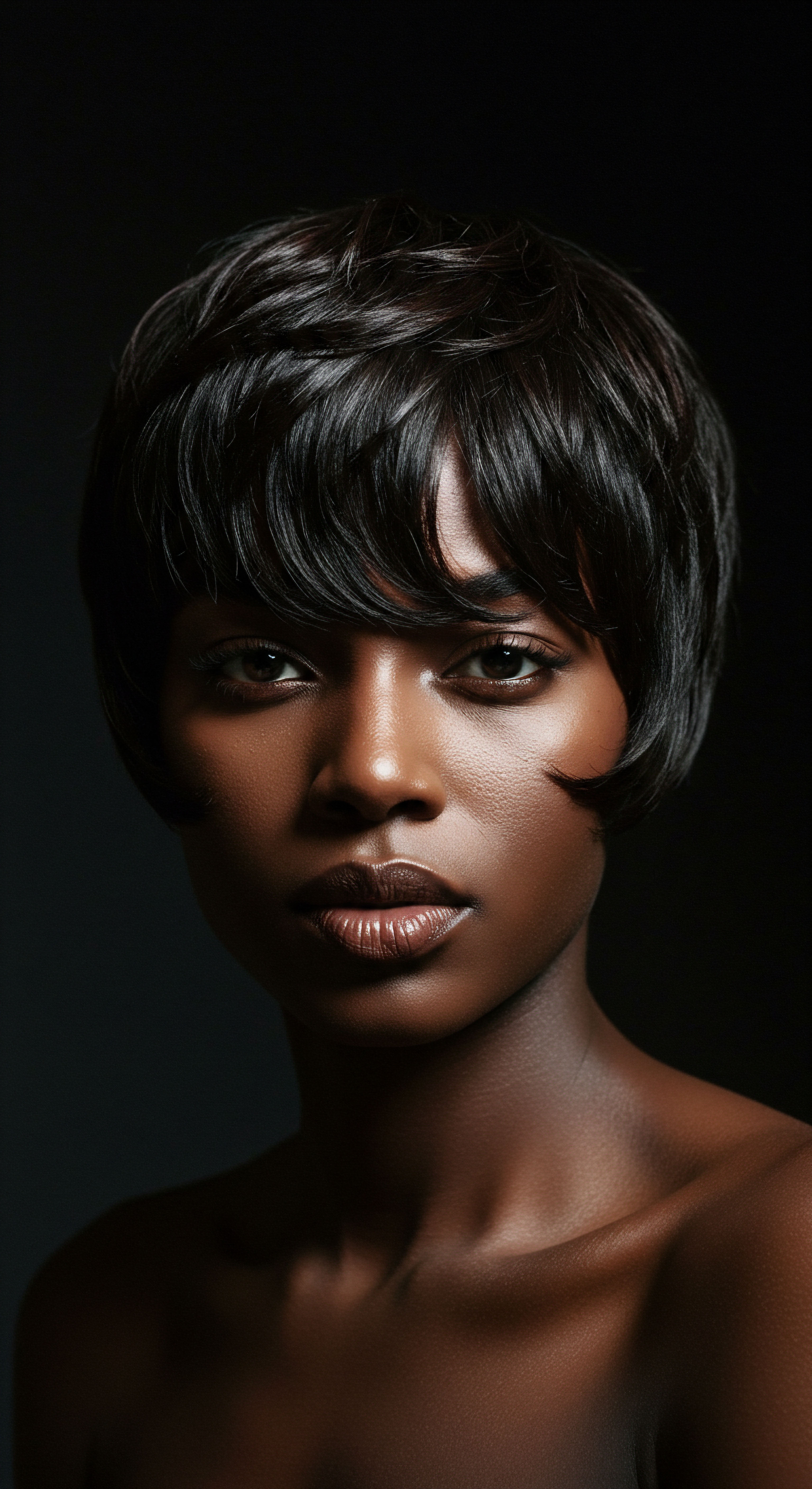
Beyond Aesthetics The Psychological Dimension
The influence of wig construction extended into the psychological realm, shaping how individuals perceived themselves and how they were perceived by others. Wearing a perfectly constructed wig could confer a sense of confidence, authority, and adherence to societal norms. This psychological dimension is a subtle yet potent aspect of how beauty was experienced.
For many, the wig was not merely an external covering but an integral part of their public persona. The act of donning a wig could be transformative, allowing the wearer to step into a role, whether it be that of a revered priest, a powerful pharaoh, or a distinguished noble. This transformative power, rooted in the wig’s constructed form, directly influenced perceptions of personal beauty as something that could be carefully curated and presented.
Wig construction allowed for a unique psychological transformation, shaping how individuals presented themselves and were perceived within ancient Egyptian society.
Consider the phenomenon of self-fashioning, where individuals use external appearance to project an desired image. In ancient Egypt, the wig was a primary tool for this. Its structured nature allowed for precise control over this projection, influencing not only what was considered beautiful but also what was considered powerful, wise, or devout.

The Enduring Legacy of Wig Construction on Beauty Perceptions
The legacy of ancient Egyptian wig construction on perceptions of beauty stretches far beyond the banks of the Nile. It offers a compelling historical example of how constructed hair can serve as a powerful medium for expressing and reinforcing societal ideals. The meticulous craftsmanship, the symbolic weight of materials, and the practical advantages all contributed to a unique aesthetic.
This historical context reminds us that beauty is not merely an inherent quality but often a cultivated expression, shaped by available technologies, cultural values, and the collective imagination. The ancient Egyptians, through their mastery of wig construction, demonstrated a profound understanding of this dynamic, crafting a visual language of beauty that endures in our collective memory.
| Period Old Kingdom |
| Dominant Wig Styles Short, layered, simple bob-like styles, often dark. |
| Associated Beauty Perceptions Order, Dignity, Practicality, Cleanliness. |
| Period Middle Kingdom |
| Dominant Wig Styles More elaborate, shoulder-length, often with defined curls or plaits. |
| Associated Beauty Perceptions Refinement, Status, Growing complexity. |
| Period New Kingdom |
| Dominant Wig Styles Highly voluminous, multi-layered, long, often with perfumed cones. |
| Associated Beauty Perceptions Luxury, Power, Sensuality, Opulence. |
| Period Wig construction adapted across periods, consistently reflecting and shaping the evolving ideals of beauty. |
The meticulous care involved in creating and maintaining these ancient wigs speaks to a timeless human desire for adornment and self-expression. Their structured forms, their inherent ability to convey status and cleanliness, and their role in artistic representation all combined to solidify their place as central to the ancient Egyptian understanding of beauty. The constructed wig, in essence, became an extension of the ideal self, a tangible representation of perfection in a world that valued order and aesthetic harmony.
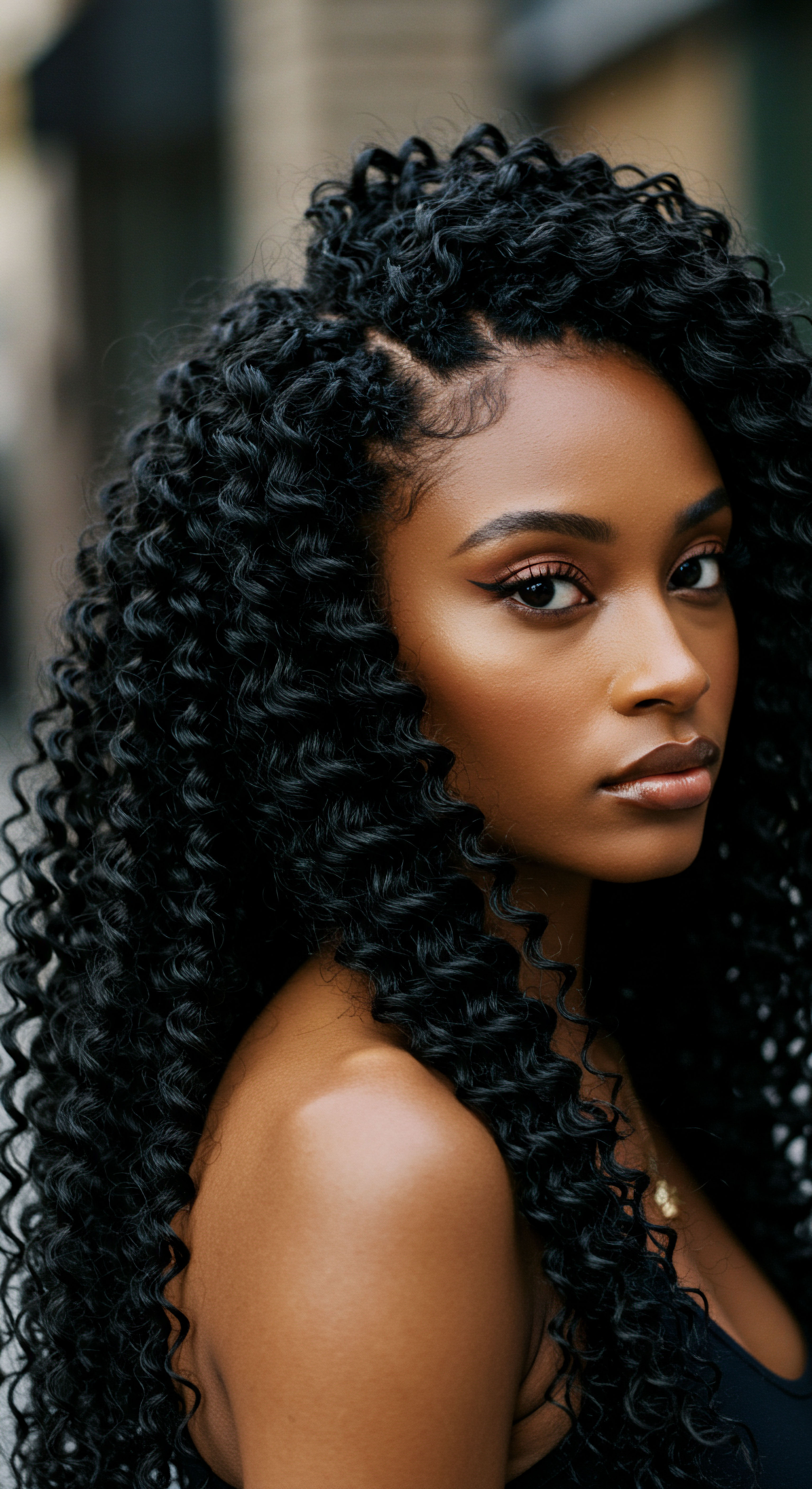
Reflection
The ancient Egyptian narrative of wigs offers a compelling echo across the millennia, reminding us that the ways we adorn our hair, whether natural or constructed, are deeply intertwined with our understanding of beauty, self, and community. It speaks to a timeless yearning for expression, for conveying something of our inner world through our outer presentation. The structured forms of those ancient coiffures, born of necessity and elevated by artistry, became more than just coverings; they were statements, silently communicating status, hygiene, and an idealized aesthetic. Their story invites us to consider the quiet power of hair, in all its textures and transformations, as a profound canvas for human aspiration and cultural identity, then as now.
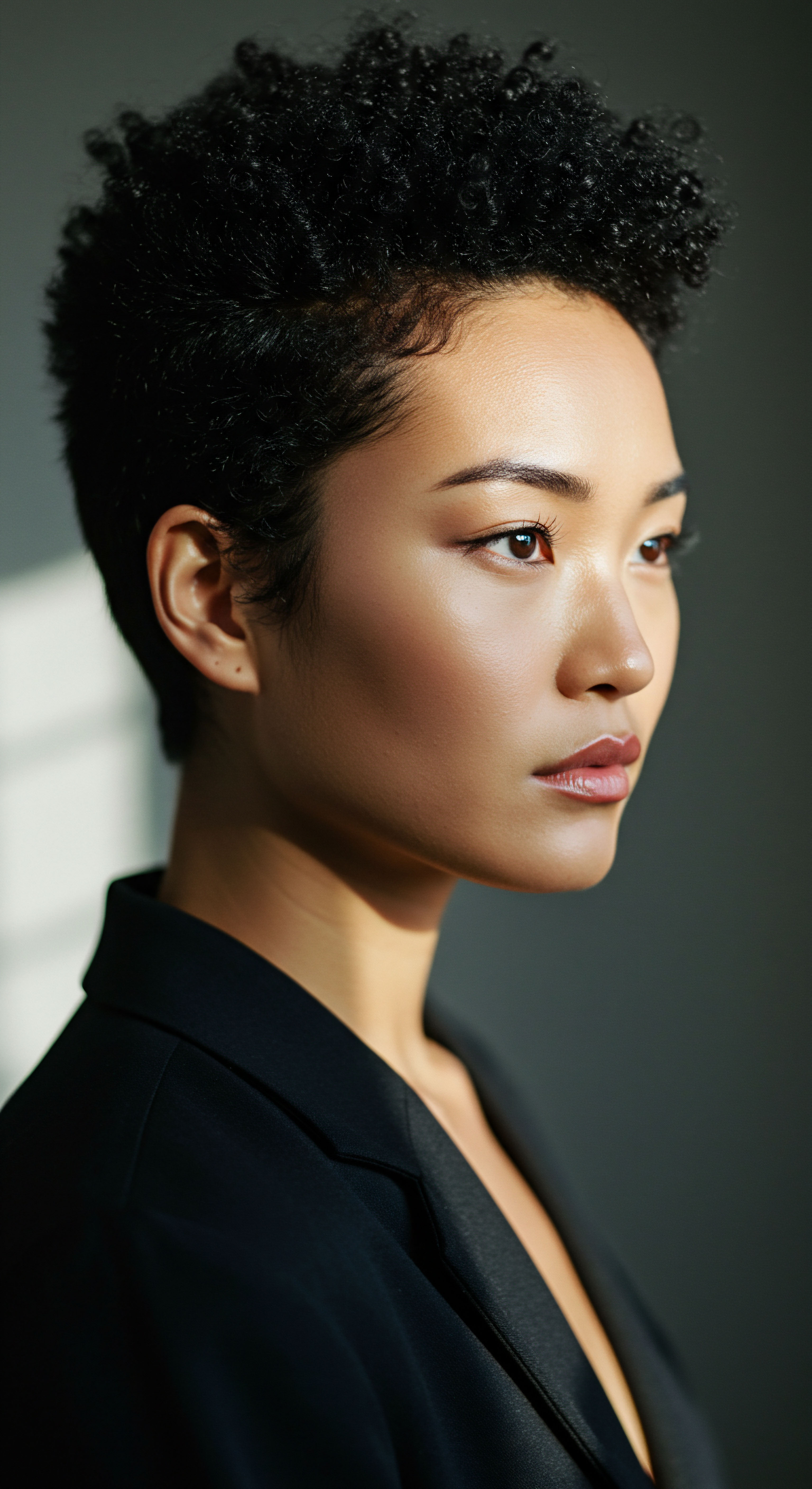
References
- Fletcher, Joann. Ancient Egyptian Hair ❉ A History of Hair, Wigs and Hairdressing in Ancient Egypt. University College London, 2010.
- Robins, Gay. The Art of Ancient Egypt. Harvard University Press, 1997.
- Stevenson, Alice. The Petrie Museum of Egyptian Archaeology ❉ Cultural Histories. UCL Press, 2015.
- Germer, Renate. Ancient Egyptian Mummies ❉ A Very Short Introduction. Oxford University Press, 2017.
- Quirke, Stephen. Exploring Religion in Ancient Egypt. Wiley-Blackwell, 2014.
- Ikram, Salima. Death and Burial in Ancient Egypt. Longman, 2003.
- David, Rosalie. Handbook to Life in Ancient Egypt. Facts on File, 215.
- Teeter, Emily. Religion and Ritual in Ancient Egypt. Cambridge University Press, 2011.